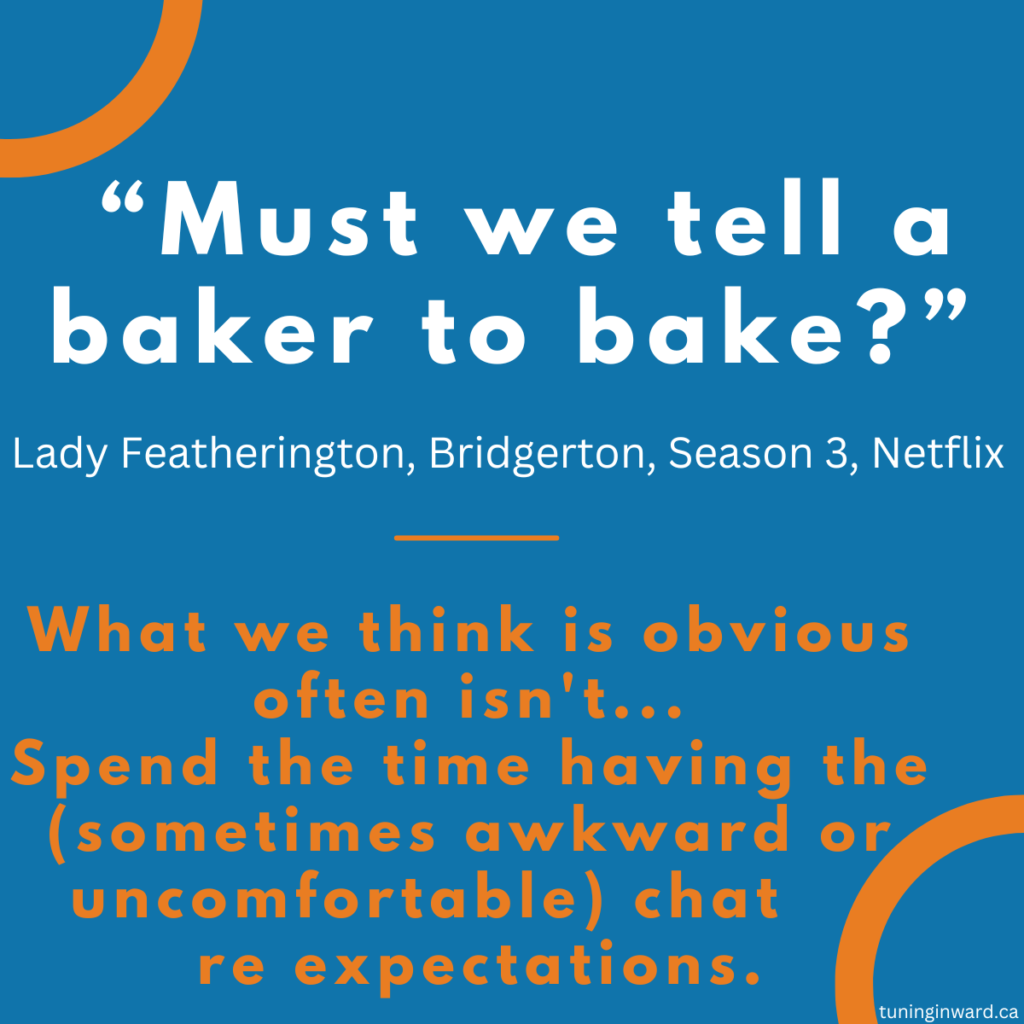While encouraging two of her daughters to quickly produce an heir, Lady Featherington, in Netflix’s Bridgerton (Season 3, episode 1), exasperatedly references their recent marriages and then says: “Must we tell a baker to bake?” It is hilarious and perfect in the context of the show. It is also insightful professional/life advice that is a profound reminder for how we can better interact.

Just as it seems obvious that a baker’s primary role is to bake, we might assume certain tasks are equally obvious, whether in our personal or professional lives. But is it really so clear-cut?
Have you ever asked (or been asked) for something ‘asap’, in a ‘short’ memo, at a ‘high level’ but comprehensive, client or business-friendly? Or at home, have you asked for something to be cleaned, bought or fixed and found it wasn’t done at all how you had in mind?
Assumptions about expectations often result in work that doesn’t meet the required standards (or preferences) or timelines, or misaligned efforts and suboptimal outcomes, causing frustration on all sides.
We probably all know that it is important to have clear communication, but why is it so hard to do?
There are a number of reasons. The top three in my opinion are:
1 – Avoiding discomfort or awkwardness.
We generally are hesitant to have conversations we think may be difficult or create conflict – so many of us avoid them altogether.
2 – Worrying about our reputation.
Particularly at work, being perceived as both competent and likeable are key drivers of success and progression. It is sometimes a delicate balance when seeking clarification to maintain trust and confidence in our abilities. On the flip side, there is also a delicate balance between micromanaging and providing direction on scope and expectations.
3 – We don’t know what they don’t know.
As was clear in Bridgerton – what Lady Featherington thought her daughters knew and what they knew were different things. However, unless we are curious and explore potential disconnects, it is hard to know where the gaps may be.
Tools to help us clearly communicate expectations:
Here are a few ideas to hopefully make conversations about expectations easier, and less uncomfortable and awkward:
- ‘Share-back’ – if you’ve given the instructions, ask for the person to summarize the takeaway (or if you’ve received the request, offer to summarize your understanding). Often, this is an opportunity to see gaps and open the door for clarification.
- Be clear on constraints – are there budget, resource, timing, rule, page limitations?
- Examples – pointing to a previous speech, PowerPoint deck, memo or deliverable can provide a helpful precedent or starting point – even if it is to highlight what you want changed.
- Big picture – share (or make sure you understand) how this task fits in to the broader business objective. Is this going to be part of a presentation to the board, a pitch to the customer, shared publicly on the website? What is in intended result – to warn, to convince, to document, to brainstorm?
- Ask for clarification with intentional questions. Starting with open questions (like those starting with “how” or “what”) will often invite more details, and specific closed questions (e.g., Is Friday ok?) can help with confirming details.
- Listen. This often seems like something that goes without saying…and that is exactly what this article is challenging. Listening is a skill and gets better with intentional practice.
Incorporating Lady Featherington’s reminder into our personal and professional interactions can help us bridge gaps, foster better collaboration, and lead to more successful outcomes.
“Must we tell a baker to bake?” serves as a reminder that even the most seemingly obvious tasks require clear communication and mutual understanding.